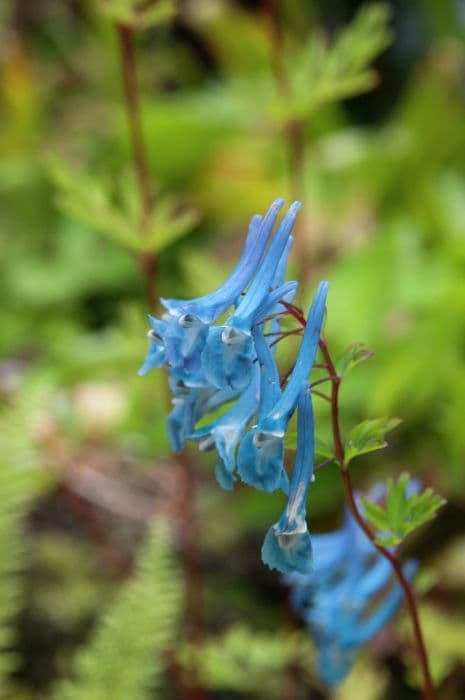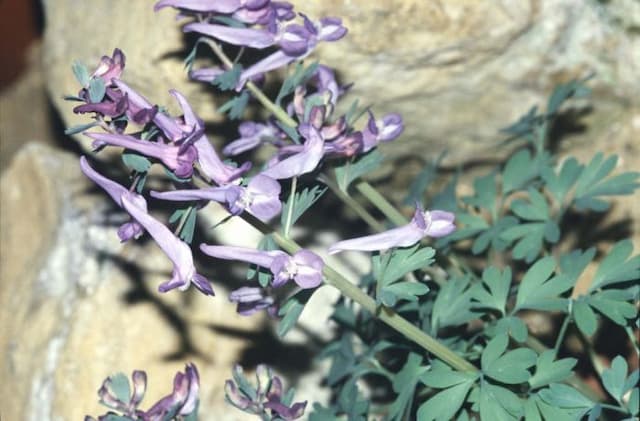California poppy 'Mission Bells' Eschscholzia californica 'Mission Bells'

ABOUT
'Mission Bells' is a compact, bushy annual to 25cm tall with feathery, silvery-green foliage and single, semi-double or double flowers borne in summer in shades of white, yellow, orange, red or pink
About this plant
 Names
NamesFamily
Papaveraceae
Synonyms
California Poppy, Golden Poppy, California Sunlight, Cup of Gold
Common names
Eschscholzia californica 'Mission Bells'
 Characteristics
CharacteristicsLife cycle
Annuals
Foliage type
Deciduous
Color of leaves
Blue-green
Flower color
Mixed
Height
1 foot [30 cm]
Spread
1 foot [30 cm]
Plant type
Herb
Hardiness zones
6
Native area
California
Benefits
 General Benefits
General Benefits- Drought Tolerance: Eschscholzia californica 'Mission Bells', commonly known as California Poppy, is well-adapted to arid environments, requiring minimal water once established.
- Easy to Grow: California Poppy is relatively low-maintenance, making it suitable for gardeners of all experience levels.
- Attracts Pollinators: The brightly colored flowers attract bees, butterflies, and other beneficial insects to the garden.
- Low Fertilizer Need: This plant does not require rich soil or frequent fertilization, thus reducing the need for chemical inputs.
- Aesthetic Appeal: The vibrant colors and delicate form of the California Poppy add beauty to any garden or landscape.
- Suitable for Xeriscaping: Its drought tolerance makes it an ideal choice for water-efficient landscaping practices.
- Ground Cover: California Poppy can spread to form a dense mat, which can help reduce soil erosion and suppress weeds.
- Reseeds Itself: Once established, it can reseed naturally, which can lead to reduced planting efforts in subsequent years.
 Medical Properties
Medical Properties- Analgesic: California poppy has compounds that may act to relieve pain.
- Sedative: Historically used as a mild sedative to calm nervousness and anxiety.
- Anxiolytic: May have mild anxiety-reducing properties.
- Antispasmodic: Sometimes used to relieve muscle tension and spasms.
- Hypnotic: Might help to induce sleep when used at higher dosages.
 Air-purifying Qualities
Air-purifying QualitiesThis plant is not specifically known for air purifying qualities.
 Other Uses
Other Uses- California poppy can be used as a natural dye for fabrics or materials, providing a range of colors from bright yellow to orange based on the concentration of the dye bath.
- The pollen of the California poppy is sometimes used by beekeepers to produce a uniquely flavored honey.
- Dried California poppy petals can be incorporated into potpourri mixes to add color and a light, floral scent to a room.
- The plant's seed pods, when dried, add an interesting aesthetic to floral arrangements and crafts.
- In plant symbolism, California poppies can represent sleep, peace, and death, and are sometimes included in memorial gardens for this symbolism.
- California poppies can be used in educational settings for children to teach about plant life cycles and native California flora.
- The plants can be used in ecological projects to restore native landscapes and support local wildlife, particularly in areas of California.
- California poppy petals have been traditionally used by some Native American tribes to create a colorful face paint for ceremonial purposes.
- The unmistakable bright bloom of the California poppy can be used in landscape photography and visual art for its striking color and association with the state of California.
- Because of its drought tolerance, California poppy is ideal for xeriscaping, a landscaping method that reduces or eliminates the need for irrigation.
Interesting Facts
 Feng Shui
Feng ShuiThe California Poppy is not used in Feng Shui practice.
 Zodiac Sign Compitability
Zodiac Sign CompitabilityThe California Poppy is not used in astrology practice.
 Plant Symbolism
Plant Symbolism- California Poppy: The California Poppy, or Eschscholzia californica 'Mission Bells', often symbolizes sleep, peace, and death because the poppy is known to induce sleep and its bright color is reminiscent of the setting sun.
- California Poppy: It is also associated with remembrance, used in memorial contexts and often found in remembrance day wreaths, invoking a sense of memory and commemoration.
- California Poppy: As the state flower of California, it represents Californian spirit and pride, embodying the characteristics of the Golden State such as resilience and beauty.
 Water
WaterThe California Poppy 'Mission Bells' prefers dry to moderate moisture levels and should be watered sparingly. It is drought-tolerant once established and can generally thrive with watering once every one to two weeks, depending on the climate and soil conditions. Allow the soil to dry out slightly between waterings. When watering, aim to provide about one inch of water, which is approximately half a gallon for a small area around the plants, to encourage deep root growth and resilience against dry spells. Overwatering can be detrimental, leading to root rot, so always check the soil moisture before adding water.
 Light
LightThe California Poppy 'Mission Bells' thrives in full sun exposure, meaning at least six hours of direct sunlight per day is ideal. This plant should be situated in a spot where it can receive unfiltered sunlight during the majority of the day. A southern or western exposure is usually best to ensure adequate light for vibrant blooms and healthy growth.
 Temperature
TemperatureThe California Poppy 'Mission Bells' grows best in temperate climates with temperatures ranging from 50°F to 75°F. It can tolerate a minimum temperature down to about 20°F but may not survive prolonged periods of freezing conditions. The ideal temperature range promotes healthy growth and flowering, so try to maintain this environment for the plant throughout its growing season.
 Pruning
PruningPruning the California Poppy 'Mission Bells' is typically done to remove spent flowers and encourage reblooming. Deadheading, or cutting off the faded flowers, can be done regularly throughout the blooming season to maintain a neat appearance and promote continuous flowering. Pruning can also involve cutting back the foliage after blooming if it becomes straggly. The best time for pruning is immediately after the bloom cycle, which is often late spring or early summer.
 Cleaning
CleaningAs needed
 Soil
SoilCalifornia Poppy 'Mission Bells' thrives best in well-draining soil with a pH range between 6.0 and 7.5. A mixture of sand, loamy soil, and compost works well to provide the necessary drainage and nutrients. It is important to avoid waterlogged conditions, so perlite or pumice can be added to enhance drainage.
 Repotting
RepottingCalifornia Poppies, including the 'Mission Bells' variety, are typically not repotted as they are annuals and prefer not to be disturbed. Sow seeds directly where they are to grow and avoid repotting to maintain their health.
 Humidity & Misting
Humidity & MistingCalifornia Poppy 'Mission Bells' is tolerant of a wide range of humidity levels and does well in dry conditions. It does not require high humidity and will thrive in the arid conditions native to its California habitat.
 Suitable locations
Suitable locationsIndoor
Ensure full sun, minimal water, and well-draining soil for indoor growth.
Outdoor
Sow in full sun, well-draining soil, water sparingly.
Hardiness zone
6-10 USDA
 Life cycle
Life cycleCalifornia Poppy 'Mission Bells' begins its life cycle with seed germination, which often occurs in early spring when soil temperatures warm up and there's plenty of moisture. Following germination, the seedling stage takes place, where the plant develops its first true leaves and establishes a small root system. As the plant matures into the vegetative stage, it develops a larger rosette of leaves and a robust root system, preparing for flowering. During the flowering stage, which typically happens in late spring or early summer, 'Mission Bells' produces its distinct, colorful blooms that attract a range of pollinators. After pollination, the plant sets seed, developing seed pods that eventually dry and open to release seeds for the next generation. Finally, in the senescence stage, the plant's above-ground parts die back, usually during the heat of late summer or in the fall, completing its annual life cycle.
 Propogation
PropogationPropogation time
Spring to early summer
The California Poppy 'Mission Bells' is typically propagated by seed. The best time for sowing these seeds directly is either in the fall, in milder climates where winters are not harsh, or in early spring after the frost has passed in colder regions. The seeds are small, so they should be sown on the surface of well-drained soil and only lightly covered or pressed into the soil, since they need light to germinate. Watering should be done gently to prevent washing away the seeds. Germination will usually take place within two weeks in the right conditions—warm soil and plenty of sunlight. It's important to space the seeds at about 6 to 12 inches apart to allow ample room for growth, as the California Poppy will spread its foliage and bloom in a sunny spot. Thin the seedlings to avoid crowding as they grow. This method of sowing seeds directly into the garden is popular due to its simplicity and high success rate for this wildflower.









